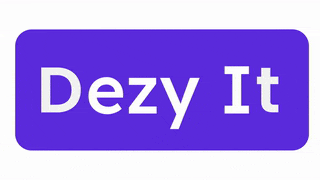Inside Dezy It: Founders on AI, Healthcare, and Building for Impact
- Indranil Roy
- Aug 23
- 3 min read
In the fast-paced world of healthcare, administrative burdens and clinician burnout are significant challenges. This discussion with Indranil Roy and Aditya Tupe, founders of Dezy It, explores how AI is being used to tackle these issues, improve patient care, and support healthcare professionals. They share insights from their journey, from starting as a design agency to becoming innovators in AI-driven healthcare solutions.
The Growing Pains of Healthcare Administration
Healthcare today faces immense pressure. Costs are rising, and the sheer volume of administrative tasks is overwhelming. Clinicians, like doctors, often have very limited time, sometimes as little as 5 to 7 minutes, to diagnose a patient's issue. The rest of their time is consumed by documentation, patient education, and other non-clinical duties.
This administrative overload isn't new. Statistics show a dramatic increase in administrative staff compared to physicians over the last 50 years. For every physician, there can be 10 to 15 administrators, creating a cycle of tasks that could be handled more efficiently. This inefficiency not only drives up costs but also leads to errors, especially in areas like medical coding, where a simple mistake can cause significant financial and logistical problems.
Key Takeaways:
Administrative Burden: Healthcare systems are bogged down by excessive documentation and back-and-forth communication, taking valuable time away from patient care.
Time Scarcity: Clinicians have very little time for diagnosis due to extensive administrative duties.
Cost and Errors: Inefficiencies in administrative processes, like medical coding, lead to increased costs and errors.
Staffing Imbalance: The number of administrators has grown disproportionately compared to physicians, highlighting an administrative bottleneck.
AI's Role in Reshaping Healthcare
Artificial intelligence is emerging as a powerful tool to address these challenges. While AI has many applications in healthcare, from diagnosis to decision support, one of the most impactful areas currently being implemented at scale is ambient AI. This type of AI works in the background, often unnoticed, to streamline processes.
A prime example is AI scribing, which significantly cuts down documentation time after patient consultations. This technology can process information, identify codes, and generate reports, freeing up clinicians to focus more on patient interaction. Beyond scribing, AI is also being used in areas like radiology, where AI image processing tools can help radiologists handle a much larger volume of scans, effectively augmenting their capabilities.
Conversational AI is another exciting frontier. Imagine AI-powered virtual assistants that can handle patient intake, gather initial symptom information, and even provide guidance. These systems can offer a more consistent and accessible patient experience, unlike human interactions that can be affected by mood or fatigue. The development of talking avatars and conversational agents is making healthcare interactions more engaging and informative.
AI in Action:
Ambient AI: Works in the background to automate tasks without direct user interaction.
AI Scribing: Reduces documentation time for clinicians by automatically generating reports.
Radiology AI: Assists radiologists by processing scans and generating reports, increasing efficiency.
Conversational AI: Enhances patient engagement through virtual assistants and talking avatars for tasks like intake and information gathering.
Overcoming AI Misconceptions and Fears
Despite its potential, AI in healthcare is sometimes misunderstood or underused. A significant barrier is the fear associated with this technology. Two main fears stand out:
Overdependency on Black Boxes: Clinicians may become reliant on AI systems without fully understanding how they arrive at their conclusions. This lack of transparency can create a sense of dependency on an unknown process.
Privacy and Security Concerns: Protecting sensitive patient data is paramount. Robust security measures are needed to prevent data leaks and breaches, ensuring that AI systems are trustworthy.
Another aspect of misunderstanding relates to the perception of AI. Many people still view AI as robotic or impersonal, expecting interactions to be like automated phone messages. However, modern conversational AI is far more sophisticated, capable of natural, human-like conversations. This shift in perception is key to broader adoption.
Addressing AI Concerns:
Transparency: Building AI systems that are understandable and explainable to users.
Security: Implementing strong data protection measures to ensure patient privacy.
Perception: Educating users about the advanced capabilities of conversational AI to overcome the
Learn more at https://www.dezyit.com/

